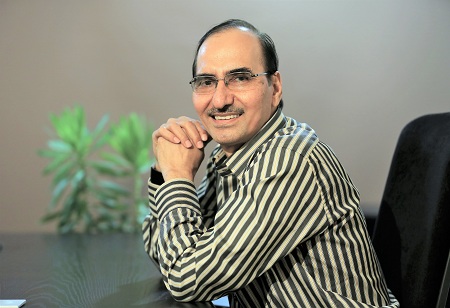In an interaction with Industry Outlook, Shohab Rais, COO – Indian Chemical Business, Tata Chemicals shares his views on the challenges faced in specialty chemical manufacturing and how they can be addressed.
Specialty chemicals market is witnessing a wave of product diversifications. How do you see the evolution of this industry in India and what is driving growth of this market?
Product diversifications happen to fulfil evolving customer and market needs and to capitalise on the emerging market opportunities. Import substitution is one area which industry constantly explores to identify products that could be potential candidates for diversification.
Demand supply gaps in export markets provide another opportunity for diversification. Today, globally, companies are exploring to develop alternate vendor bases to have China plus one supply chains to reduce their dependence on a single country. This supports creation of additional production base in India for global markets, and this export demand is also pushing product diversifications.
R&D and innovation provides companies with diversification opportunities to develop products that offer better value in comparison with available alternatives. This includes customization and application development that can expand market and help business growth. This also helps create intellectual properties that are valuable in the long-term as well.
Which are the major technologies emerging in this segment with regard to manufacturing? How are they transforming the industry for the better?
Customers and manufacturers today are looking for solutions that are sustainable, both for raw materials and finished products. This is driving technological development to a large extent. Natural, sustainable and renewable sources for raw materials and energy are focus areas. On the principles of circular economy, reduction in the generation of effluent and converting same into a usable product as input to other industries are other areas of technological developments.
Carbon neutrality in manufacturing and reduction in water consumption are other areas where companies are seeking technological solutions. Health consciousness of consumers, use of natural inputs in the manufacturing of products, both for human/animal consumption or otherwise are other areas of research.
Use of information technology, including AI, IIoT, digital imaging, data analytics etc. is driving efficiency, quality and cost optimisation efforts of the industry.
Where does India stand in this field on a global scale? And what metric measures need to be taken to further the growth of R&D efforts?
Indian domestic
specialty chemical industry is not heavily investing in innovation with exception of a few companies that are engaged in developing innovative products in the true sense. Some of the larger players in India spend less than 3% of their revenue on R&D whereas many global companies spend about 5-8% of their revenue on R&D.
Metrics on R&D, like spend as percentage of revenue and number of patents give indication of R&D efforts of an organisation. At Tata Chemicals, we have two R&D centres, one in Pune and the other in Bangalore, and have cumulatively filed for more than 160 patents and have been granted about 50 patents.
